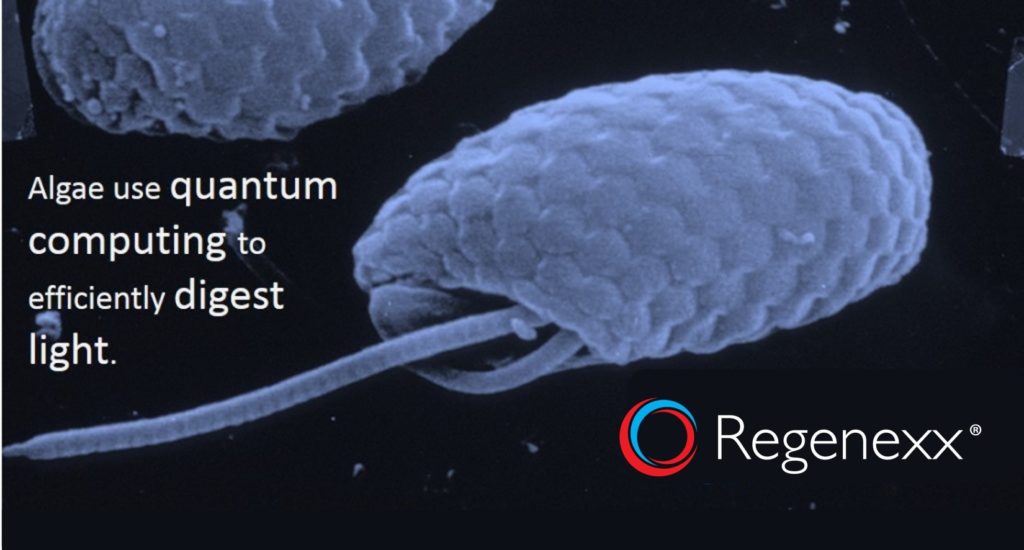Algae use Quantum Computing to Be More Efficient: Implications for Stem Cells
I don’t usually blog about algae, but I read a study recently that simply blew me away. Basically, certain forms of algae that live in light poor environments use the same techniques currently being used in quantum computers to squeeze every last ounce of energy from that light for photosynthesis. With a single paper, the strange world of quantum physics and biology have been merged.
For those who don’t follow quantum computing, it’s a field of computer science that uses the bizarre properties of quantum physics to solve problems. Basically, once light is made to become coherent (with all the waves synchronized), it can exist in every possible state at the same time (an effect called superposition). While that statement may seem confusing, this little trick can be used to break codes, hence the interest of governments in quantum computers. For example, if there are a trillion trillion different combinations of a code and a regular computer tries each permutation one by one, it could take years before the computer chances on the right sequence of letters or numbers to break the code. In a sophisticated quantum computer, the computer can try all possible codes at once. Or said another way, if a computer tries to figure out the best route for a driver to take 100,000 different stops to save the most gas, it would have to try 100,000 times 100,000 different routes one by one and estimate the gas used in each route and then compare each to find the best. In a quantum computer, all routes exist simultaneously on the computer’s chip, so the computer simply looks to see the one that uses the least gas.
What does all of the physics mumbo jumbo have to do with algae? In low light environments, the algae has to figure out the quickest way to get the light from it’s cell wall to the area where the cell can turn that light into energy via photosynthesis. The protein that does this uses coherence and superposition to try all possible routes at once, reducing the light lost in the transfer. This allows these algae to live in environments where an inefficient light transfer wouldn’t usually provide enough energy to run the cell.
What does this have to do with stem cells? This discovery will make very big “waves” in biology, as it means that many other cells may use quantum tricks to find the best route or most efficient process. For example, we know that bees somehow just “know” which route between flowers to take of the millions possible to fly the shortest distance. Do bees have a quantum computing protein? Do all cells (including stem cells) have quantum proteins that allow them to figure out the most efficient ways and processes such as folding proteins? If so, can we control that effect to better study stem cells? In this algae experiment the authors discovered the quantum trick by making algae with a bad quantum protein. Can we add quantum effects to make biologic processes more efficient in our body? For example, would a quantum protein boost reverse some of the effects of aging like inefficient energy use by old cells?
The upshot? If this research continues to be replicated, this discovery could be as important for biology as the discovery of DNA and RNA. In addition, while we humans have always had a hard time grasping the weird world of quantum mechanics where cause and effect break down, we may need to get used to thinking in ways that our daily experience doesn’t support. Finally, cell biologists have to go back to school to take a few quantum physics courses to better understand how cells work!

If you have questions or comments about this blog post, please email us at [email protected]
NOTE: This blog post provides general information to help the reader better understand regenerative medicine, musculoskeletal health, and related subjects. All content provided in this blog, website, or any linked materials, including text, graphics, images, patient profiles, outcomes, and information, are not intended and should not be considered or used as a substitute for medical advice, diagnosis, or treatment. Please always consult with a professional and certified healthcare provider to discuss if a treatment is right for you.
